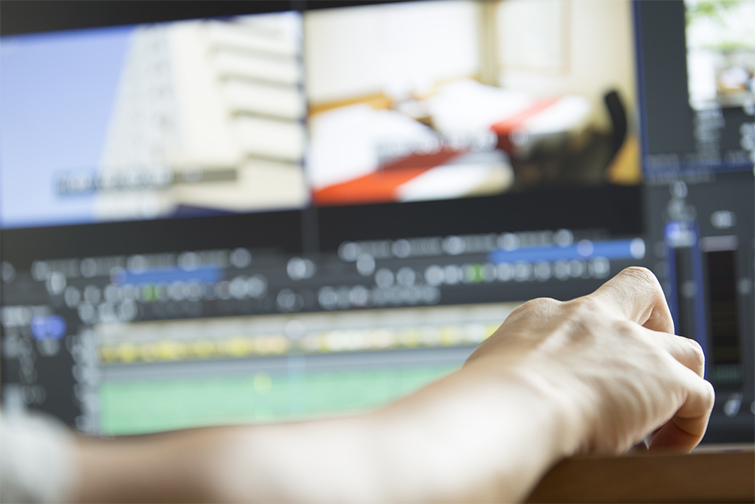
Freelance Tip: How Do You Know When to Turn Down a Job?
Learning how to find steady freelance video production gigs is hard enough, but what about knowing when you shouldn’t take the job?
Cover image via VADL.
As a freelance editor, I sometimes have to turn down work, even if I have nothing else going on, because I know that the job is likely to be a disaster. By this, I mean the client might be so difficult to work with that it will just be too stressful, or the project involves so much work that it really won’t be worth it in the end — or it’s just beyond my capability.
Depending on where you are in your career, your income for the month, and your general work pipeline, saying no to any job might be a luxury you can’t afford. That’s okay — we’ve all been there, and sometimes you just have to knuckle down, grit your teeth, and push through. Plus, work is work — I’m always happy to have some.
But, if you are in a position to say no when you suspect that the whole thing could be a nightmare, how do you know when to say no, and why? I recently had to do this, and without revealing who the client was, I’ll try to break down my thought process.
Connection — How Well Do You Know The Client?

Image via Hiroshi Teshigawara.
In my case, the job came through a phone call out of the blue from a client of a friend. Normally, I would be totally up for expanding my client network through my friends — or finding a way to service their clients when they’re too busy. The call came based on a recommendation, but whenever I’m talking to someone on the phone for the first time, I’m always trying to get a sense of who they are; how much experience they have; what kind of budget they have; and any other factors that will help me understand how to tackle the job, the client, and the offer.
If the call had been from a previous client of mine or even an agency I had heard of, I might have felt differently. But this was just “some random” who, when I looked them up, was also the star of the video and didn’t seem to have much experience in video at all.
Budget — Do Your Expectations Match?

Image via Focus and Blur.
The second alarm bell was that our budget expectations were wildly out of alignment.
They were offering less than half my usual day rate, for what would easily have been a full day’s work (if not two). Plus, they wanted to sit in and run the session.
It’s worth quickly talking about a daily rate. Yes, it’s how much you get paid for a day’s work, so it should reflect what you need to live, but it should also be indicative of your experience level, your professionalism, and your abilities. We usually expect to pay more for something if it’s higher quality — or if there’s more of it. So the same should be true of hiring a freelancer. The more days you work, the more it costs — the more experienced the artist, the higher the fee.
That said, it’s totally up to you what to charge, whether you want to offer discounts or “elastic” pricing. (Bear in mind that your daily rate can also filter out clients who can’t afford what you have to offer.) 9 times out of 10, when a client asks me to lower my rate and I decline, they just accept the rate, and we work happily together. (So don’t be afraid to say “No.”)
If someone is asking you to work for less, then there is a mis-alignment in understanding either what the project involves or what your time, skills, and expertise are worth. Often, this is due to inexperienced clients who don’t know what they don’t know (which is fine: we all start not knowing anything), but part of your job will then be managing their expectations to keep things from spiraling out of control — and over budget.
Opportunity Cost — Are You Missing Out?

Image via Fedorovekb.
In my case, the job they could afford should have taken half a day or less. They job they wanted would have taken a lot longer, but the opportunity cost was minimal. I was available to do the job, but I decided not to. Instead, I wrote this post.
But sometimes when you’re trying to decide whether to say no, it’s worth considering what your best alternative might be. On a long job, the client might offer you a lower daily rate given how many days they’re paying for (again, you can always say “no”) or a buy-out fee for the job, meaning you just have to do it as quickly as you can to make it worth your while.
But if that job is going to take up a lot of your time, or move you in a career direction you don’t want, you may want to decline so you can keep your options open for other projects.
This is tricky as a freelancer, though. What if nothing better comes up? What’s more, it depends on your typical work-engagements. If you’re used to working for different clients every few days or weeks, then a three-month job might seem like a whale.
If you’re used to taking on feature film work that lasts for months at a time, then taking on a couple of weeks of work might be no big deal — unless you need to start on the next film right away.
So this is one of those “Hindsight is 20-20” situations, but it’s another small indicator that, when combined with the other two, might mean you should pass on the job.
Growth — There’s Only One Way to Learn
“A man who carries a cat by the tail learns something he can learn in no other way.” —Mark Twain
In the end, if you take on a job, and it ends up being a disaster, then at least you will have learned something. And that learning isn’t just “silver-lining” thinking — it’s valuable experience you can’t get any other way.
If you choose to pass on the job, hopefully something better will come along, or maybe you’ll hear from the person who did take it on that it was a disaster, or a triumph. Or you’ll never know.
But over time, you’ll develop a gut feeling for these things that you should choose not to ignore.
Looking for more video production tips and tricks? Check out these articles.






